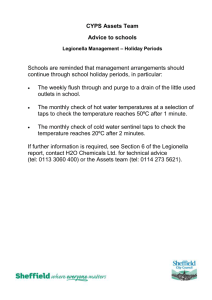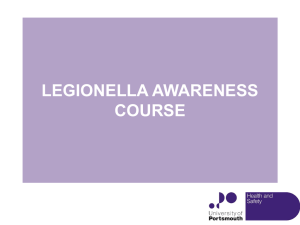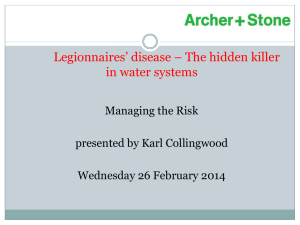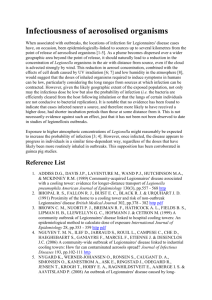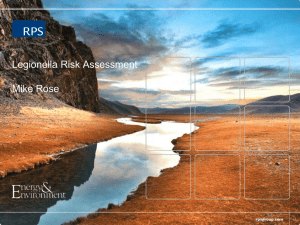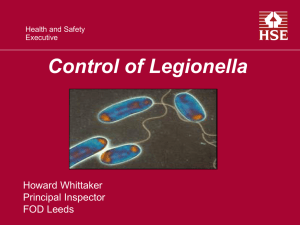Blue-White Legionella - Special Pathogens Laboratory
advertisement
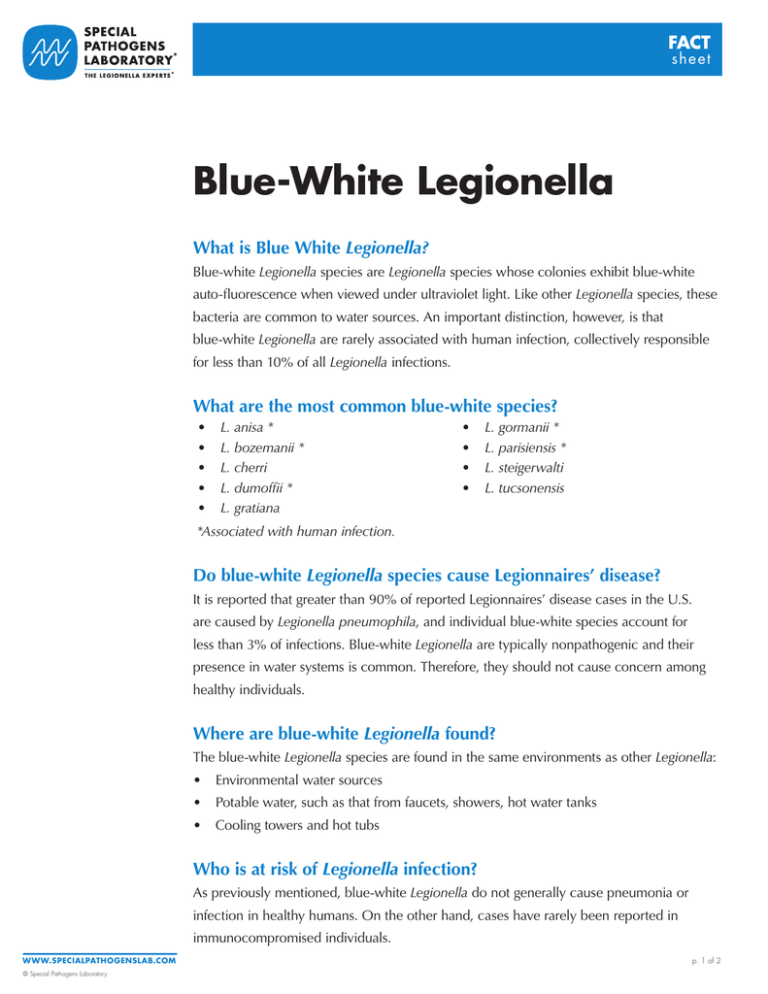
FACT she et Blue-White Legionella What is Blue White Legionella? Blue-white Legionella species are Legionella species whose colonies exhibit blue-white auto-fluorescence when viewed under ultraviolet light. Like other Legionella species, these bacteria are common to water sources. An important distinction, however, is that blue-white Legionella are rarely associated with human infection, collectively responsible for less than 10% of all Legionella infections. What are the most common blue-white species? • • • • • L. anisa * L. bozemanii * L. cherri L. dumoffii * L. gratiana • • • • L. gormanii * L. parisiensis * L. steigerwalti L. tucsonensis *Associated with human infection. Do blue-white Legionella species cause Legionnaires’ disease? It is reported that greater than 90% of reported Legionnaires’ disease cases in the U.S. are caused by Legionella pneumophila, and individual blue-white species account for less than 3% of infections. Blue-white Legionella are typically nonpathogenic and their presence in water systems is common. Therefore, they should not cause concern among healthy individuals. Where are blue-white Legionella found? The blue-white Legionella species are found in the same environments as other Legionella: • Environmental water sources • Potable water, such as that from faucets, showers, hot water tanks • Cooling towers and hot tubs Who is at risk of Legionella infection? As previously mentioned, blue-white Legionella do not generally cause pneumonia or infection in healthy humans. On the other hand, cases have rarely been reported in immunocompromised individuals. WWW.SPECIALPATHOGENSLAB.COM © Special Pathogens Laboratory p. 1 of 2 FACT she et Blue-White Legionella If blue-white species have been identified in a water source, should the source be disinfected? Since blue-white Legionella species rarely cause disease and can often be detected during routine testing, water distribution systems harboring these species need not be disinfected. There have, however, been cases of Pontiac Fever associated with direct exposure to intense aerosols containing L. anisa. These devices (humidifiers, misters, etc.) should be kept clean and periodically disinfected according to the manufacturer’s instructions. Sources • www.legionella.org • Igel L, Helbig JH, Luck PC. Isolation and characterization of a nonfluorescent strain of Legionella parisiensis. J Clin Micro. 2004. • Muder, Robert R., and Victor L. Yu. “Infection Due to Legionella Species Other Than L. pneumophila.” Clinical Infectious Diseases (2002) 35: 990-98. • Benin AL, Benson RF, Besser RE. Trends in Legionnaires’ disease, 1980-1998: declining mortality and new patterns of diagnosis. Clin Infect Dis 2002;35:1039-46. • Neil K, Berkelman R. Increasing incidence of legionellosis in the United States, 19902005: changing epidemiological trends. Clinical Infectious Diseases 47, 591-599. 2008. Disclaimer: This information is provided for informational purposes only and not for the purpose of providing legal or medical advice. You should contact your physician or attorney to obtain advice with respect to any particular issue or problem. WWW.SPECIALPATHOGENSLAB.COM © Special Pathogens Laboratory p. 2 of 2
